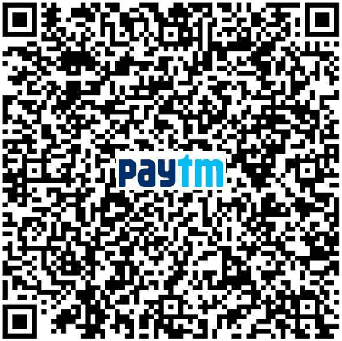Read more
4Month/40 Hours Price:105,000
100,000
Complete React Native Developer Course
Key Learnings:
By the end of this course, you will be able to:
-
Understand the core concepts of React Native and how it works with React.js.
-
Set up a complete React Native development environment on Windows/macOS.
-
Build responsive and dynamic cross-platform apps for iOS and Android.
-
Utilize components like View, Text, ScrollView, FlatList, and more.
-
Handle navigation using
react-navigation. -
Work with APIs, including RESTful services and JSON data.
-
Manage state using React Hooks and Context API.
-
Use AsyncStorage and other local storage solutions.
-
Implement animations and integrate third-party libraries.
-
Debug and test mobile applications effectively.
Course Content:
- Introduction to Core Elements and Styling
- - Building with Built-in Components
- - Customizing Appearance in React Native
- - Layout Techniques and Flexbox Overview
- - Implementing Flexible Layouts
- - In-depth Exploration of Flexbox
- - Style, Structure, and Layout Review (Quiz) -
- Enhancing Layout Responsiveness
- Responding to User Actions
- Creating and Managing a Goal List
- Comparing Styles Across iOS and Android
- -Using ScrollView for Scrollable Interfaces
- Efficient List Rendering with FlatList
- Expanding with Additional Components (Quiz)
- Breaking Down UI into Reusable Components
- Identifying and Handling Runtime Errors
- Console Logging for Insights
- Remote JavaScript Debugging Techniques
- Exploring React DevTools
- Referencing Official Documentation
- Managing UI Components Effectively
- Handling Runtime Issues Within Components
- Utilizing Console Logs in Development
- Debugging Component Logic Remotely
- Using DevTools to Inspect Component Trees
- Leveraging Documentation for Support
- Dynamic Sizing and Layouts
- Applying the Dimensions API for Responsiveness
- Adapting Image Dimensions Dynamically
- Managing Orientation Shifts - Building UI for Portrait and Landscape Modes
- Preventing Overlap with KeyboardAvoidingView
- Optimizing Landscape Experience
- Making Interfaces Adaptive (Quiz)
- Improving Responsiveness Using windowDimensions
- Targeting Platforms with Platform API - Styling the System Status Bar
- Understanding Navigation Principles
- Displaying Categories on the Home Screen
- Creating Grids for Content Display
- Installing and Configuring Navigation Libraries
- Switching Between Screens - Setting Initial Navigation Targets
- Navigating Programmatically with useNavigation
- Passing Data Between Views with Parameters
- Showing Meal Details with Navigation
- Incorporating Images and Design Enhancements
- Customizing Headers and Backgrounds
- Dynamically Adjusting Navigation Headers
- Building the Meal Detail View
- Finalizing Detail Display with Styling
- Adding Functional Buttons to Headers
- Integrating Icons into Navigation
- Implementing Drawer-Based Navigation
- Setting Up Bottom Tab Navigation
- Structuring Nested Navigators
- Finishing Touches for Navigation Flows
- Using Context API for Global State -
- Accessing Shared Data with useContext
- Creating and Consuming Context for Features
- Managing Favorites Through Global State
- Introducing Redux and Redux Toolkit
- Defining and Using Redux Slices
- Updating State via Actions and Reducers
- Displaying Redux Data in the UI
- Setting Up the Initial Project
- Adding Navigation and Custom Styling
- Designing Core Expense Components
- Incorporating Placeholder Expense Data
- Rendering Expense Lists
- Enhancing Layout with Custom Styles
- Formatting Output Like Dates and Amounts
- Making Items Interactive and Navigable
- Enabling Programmatic Screen Transitions
- Supporting Edit Mode and Routing Parameters
- Adding Buttons for User Actions - Closing Modals with Logic
- Managing Expenses with Global Context
- Enabling Deletion and Modification of Data - Finalizing the Expense Tracker Interface
- Creating a Custom Input Field
- Constructing the Input Form Layout
- Linking Input Elements to State
- Applying UI Enhancements for Forms
- Capturing User Input Dynamically
- Handling Form Submissions Cleanly -
- Using Default Values in Forms
- Validating User Entries - Visualizing Input Errors with Feedback
- Preparing the Backend (Firebase)
- Installing Axios for API Calls
- Sending Data via POST Requests
- Retrieving Data with GET Requests
- Transforming Backend Responses for UI
- Using Server Response Data
- Updating and Deleting via API - Displaying Loaders and Managing States
- Handling Network and API Errors Gracefully
- Exploring How Authentication Systems Operate -
- Preparing the Backend for Auth Services
- Designing Login and Signup Screens
- Authenticating Users via API
- Creating and Logging in Users
- Displaying and Handling Auth Errors
- Storing Login States Using Context
- Extracting and Storing Tokens
- Restricting Access to Protected Screens
- Adding Logout Options - Accessing Secure Server Resources -
- Auto-Login by Saving Tokens Locally - Notes on Token Expiration and Refresh
- Setting Up Favorite Places App Structure
- Navigating to the Add Place Form
- Installing and Configuring Camera Access
- Capturing and Previewing Photos
- Creating Custom Form Components
- Detecting and Using User Location
- Embedding Maps for Location Preview -
- Allowing Map Interaction for Location Selection -
- Confirming and Saving Picked Coordinates
- Managing Local and State-Based Storage
- Converting Coordinates to Real Addresses
- Displaying a List of Saved Places
- Styling Saved Place Items
- Working with SQLite for Data Storage
- Writing and Fetching Data with SQL
- Displaying Individual Place Details
- Previewing Maps in Read-Only Mode
- Understanding Expo's Role and Workflow
- Exploring Alternatives to Expo
- Setting Up Bare React Native Projects
- Using Native Device Features Without Expo -
- Ejecting from Expo Safely - Creating CLI-Based Native Projects
- Publishing for iOS and Android
- Setting App Metadata and Icons
- Managing App Versions and Environment Settings
- Configuring and Building with EAS
- Building iOS Apps on Windows
- Generating Release Builds Without Expo
- Preparing Android Builds for Release
- Introduction to Local Notifications
- Installing and Configuring Notification Library
- Scheduling and Triggering Local Alerts
- Handling Notification Permissions
- Reacting to Incoming and Clicked Notifications
- Introduction to Push Notifications
- Setting Up Push Notification Services
- Using Push Tokens to Trigger Alerts
- Sending Notifications from Bthe ackend
- Setting Up the Backend Server
- Configuring the MongoDB Database
- Developing the User Registration Endpoint
- Implementing User Login Functionality
- Creating the API Endpoint for Adding Books
- Fetching Book Listings with Pagination
- Finalizing the API: Deleting Books and Cleanup
- Introduction to React Native & Setting Up the Development Environment
- Structuring the Root Layout of the App
- Designing the UI for the Login Page
- Designing the UI for the Registration Page
- Connecting the Signup Form to the Backend
- Deploying the Complete Backend API to a Live Server
- Understanding and Implementing Automated CRON Jobs
- Building Login, Logout, and Authentication Verification Logic
- Configuring Automatic Navigation and Setting Up Tabs
- Designing the UI for the "Create Book" Screen
- Completing the Book Creation Feature
- Developing the Main Home Screen
- Designing and Implementing the User Profile ScreenCapstone Project Overview
- Setting Up the Backend Server
- Configuring the MongoDB Database
- Developing the User Registration Endpoint
- Implementing User Login Functionality
- Creating the API Endpoint for Adding Books
- Fetching Book Listings with Pagination
- Finalizing the API: Deleting Books and Cleanup
- Introduction to React Native & Setting Up the Development Environment
- Structuring the Root Layout of the App
- Designing the UI for the Login Page
- Designing the UI for the Registration Page
- Connecting the Signup Form to the Backend
- Deploying the Complete Backend API to a Live Server
- Understanding and Implementing Automated CRON Jobs
- Building Login, Logout, and Authentication Verification Logic
- Configuring Automatic Navigation and Setting Up Tabs
- Designing the UI for the "Create Book" Screen
- Completing the Book Creation Feature
- Developing the Main Home Screen
- Designing and Implementing the User Profile Screen
Tough Open-Ended Job Interview Questions
What to Wear for Best Job Interview Attire
Job Interview Question- What are You Passionate About?
How to Prepare for a Job Promotion Interview
Stay connected even when you’re apart
Join our WhatsApp Channel – Get discount offers
500+ Free Certification Exam Practice Question and Answers
Your FREE eLEARNING Courses (Click Here)
Internships, Freelance and Full-Time Work opportunities
Join Internships and Referral Program (click for details)
Work as Freelancer or Full-Time Employee (click for details)
Flexible Class Options
Week End Classes For Professionals SAT | SUN
Corporate Group Trainings Available
Online Classes – Live Virtual Class (L.V.C), Online Training
Popular Courses
- React JS Basic To Advance
- Complete React JS Developer Course
- Next.js & React — The Complete Guide
- Complete Front-End Web development (Html, CSS, JavaScript, React JS)
- Next.js & React — The Complete Guide




0 Reviews